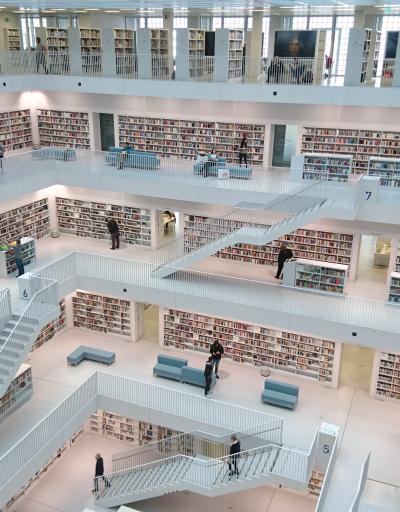
Shutterstock
“educating art, a program that promotes art and culture as tools for reintegration”.

Where
Chile
Chile
When
2020
2020
Who
Gendarmería de chile, a service dependent on the ministry of justice and human rights (minjud).
Gendarmería de chile, a service dependent on the ministry of justice and human rights (minjud).
Website of the policy/measure
Website
Website
Read the full report
Go to full report
Go to full report
Description of the policy/measure
Gendarmeria de chile is an institution that "has the purpose of attending, monitoring and contributing to the social reintegration of people who, by resolution of competent authorities, are detained or deprived of liberty and to fulfill the other functions indicated by law" (article 1 of the organic law of gendarmerie of chile). in this sense, actions are defined to reduce recidivism and promote the social integration of people who violate criminal law. these actions are framed within the reintegration model that the open, closed and post-prison system has developed to reduce the risk of the adult offender population. in general, this model considers the provision of benefits aimed at solving the needs that may interfere with serving the sentence, whether in terms of physical and mental health, access to education, training and work; sports, recreational, artistic and cultural activities; and family ties, among others. from this perspective, it is relevant to strengthen specially the cultural axis, since it constitutes a tool that invites reflection, experience and common re-reflection, being able to offer transformative spaces of freedom, which in turn involve the development of social competences to reduce the somehow the effect of imprisonment, in parallel in the replacement of criminogenic behavior, by the adoption of prosocial behaviors. thus, artistic education within prisons is a contribution to the social reintegration model used by the gendarmeria, since it directly contributes to modifying the actions that involve the use of free time, even more so when this area constitutes a risk factor. culture is considered an integration mechanism that favors communication with the external world. thus, giving the possibility that those who are serving a sentence through artistic expressions make a cognitive change in relation to criminal activity, which is in accordance with the interventional line of the rnr model applied in the population of the closed, open and post-prison environment. this is reflected in the development of the "educator art program" that makes artistic monitors available for a variable number of hours per week, for the execution of workshops in disciplines of choice that fall within the following categories: visual arts (drawing , painting, sculpture and photography, among others), literature (writing and poetry), performing arts (dance, theater, circus, pantomime and radio theater), cinema (audiovisual production, appreciation and cinema forum) and music (musical interpretation, conformation of orchestras, singing, etc.) in 2018, the workshops provided by the former dibam (today, the national service of cultural heritage under the mincap), through the "reading promotion program" were added to the offer in the cultural field. these libraries are collaborative work spaces that favor interaction between people and access to culture, activities such as artistic exhibitions, reading sessions, film projections, among others, can be developed in these spaces, which it is suggested to use frequently.
2005 Convention Monitoring Framework Goal(s)
Area(s) of Monitoring
Results achieved
Although gendarmeria de chile does not have a formal and/or quantifiable record of the results of this measure, the experience of more than 15 years of some of these workshops shows how participation becomes a space for meaningful expression for the inmate or internal, with a growing interest in participating in artistic-cultural activities, as well as a low dropout rate. in the chilean gendarmerie public account for 2018, it is noted that in the case of artistic and cultural activities, there is a sustained increase in the participation of inmates in the educator art program, incorporating in a progressive and differentiated way to the population with low and very low recidivism risk levels, due to the implication that these workshops have in reducing the effects of imprisonment. the document requires that various initiatives were carried out in the context of this program, mainly the product of the public-private collaboration. among them, the collaboration agreement signed between gendarmeria and the corpartes foundation highlights, which allowed virtual tours to be carried out, in addition to the possibility of persons deprived of freedom to visit different exhibitions at the center. in total 585 people participated, between institutions and officials of the institution. in this same line, and with the purpose of bringing quality artistic experiences to the private population of freedom, the "artistic visits" program was carried out of the national fund for cultural development and the arts - fondart, dependent of the mincap, exhibiting theater works to penitentiary establishments in the metropolitan region, highlighting the staging and reversal of the shakespeare classic "the merchant", presented at the colina 2 penitentiary compliance center, which was presented by the minister of cultures, consuelo valdes. so, in the first year of this initiative, 2 thousand 090 inmates and internals of the metropolitan region participated.
Evaluation of the policy/measure
No information.


